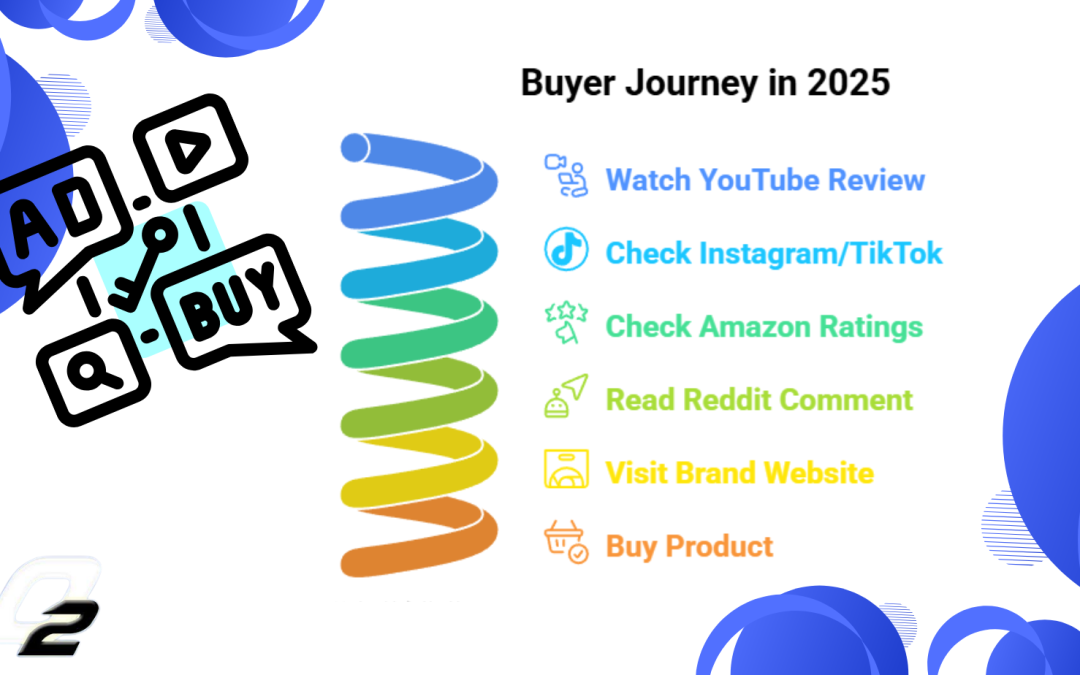
by Shashikanth Heerekar | Dec 11, 2025 | All Things about Marketing, Digital Marketing, SEO News, Technology
When I talk about “Search Everywhere Optimization,” I am simply talking about how people search today. Years ago, most users depended only on Google. But now, people don’t stay on one platform. They move from one place to another before making any decision.
This is why I believe Search Everywhere Optimization is not just a trend; it is the new reality of how buyers behave.
Let me explain this in a very simple and casual way, just how I explain it to my clients.
Why Search Everywhere Is Very Important
People don’t trust only one platform anymore.
Today, users follow a long journey before they buy anything.
They might start on Google, then move to others, or they might find it on any platform and then move to other platforms.
- YouTube
- Instagram
- TikTok
- Reddit
- Quora
- Amazon
- Product review sites
- Social media posts
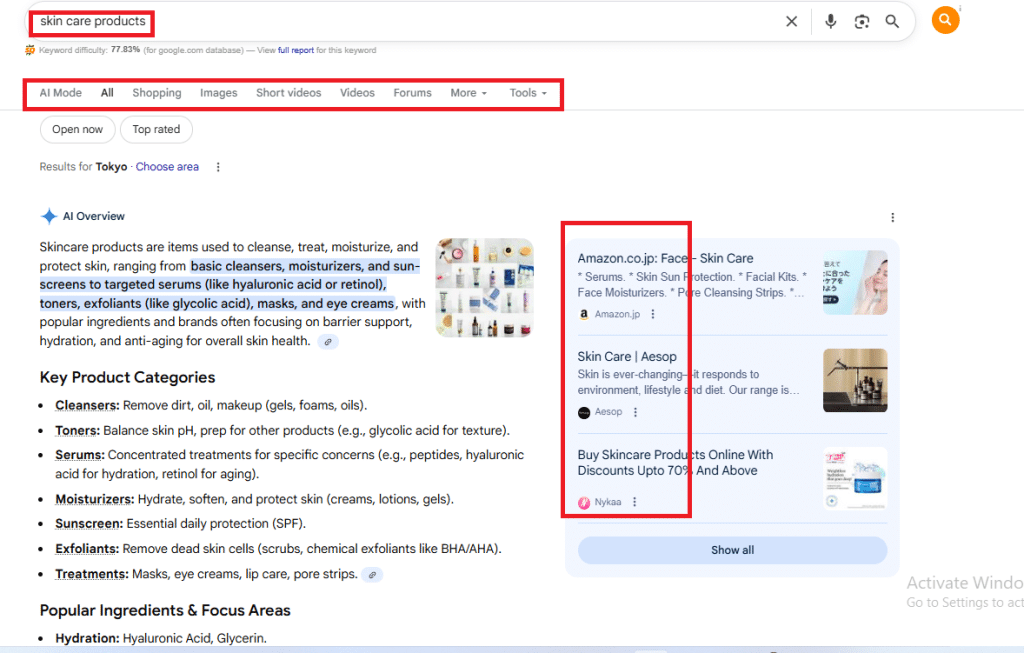
A buyer is not “searching once.”
A buyer is searching everywhere.
Let’s take a simple example:
Someone wants to buy a skincare product. For an instant I was scrolling YouTube last night, and somewhere in my mind I was also looking for skincare products. Suddenly, I found a video on YouTube Shorts related to skin care on that platform. I got interested and curious to know more about that product. So, I started switching to another platform where I can learn more about the product. Now I try to search for that product on every platform, like I will watch videos related to how to use it, check the reviews on forums, and check the rating, then I’ll visit the affiliate market and search for the product, and then I decide to purchase or not.
- First, they watch a YouTube review.
- Then they check Instagram Reels or TikTok videos.
- Following that, they check Amazon ratings.
- In sequence to the above, they read a Reddit comment.
- Only after all this do they visit the brand website.
- Then they buy.
Let’s look at the real-time examples below and how they did branding related to their product and also never left any platform marketing or branding their product; just have a look.
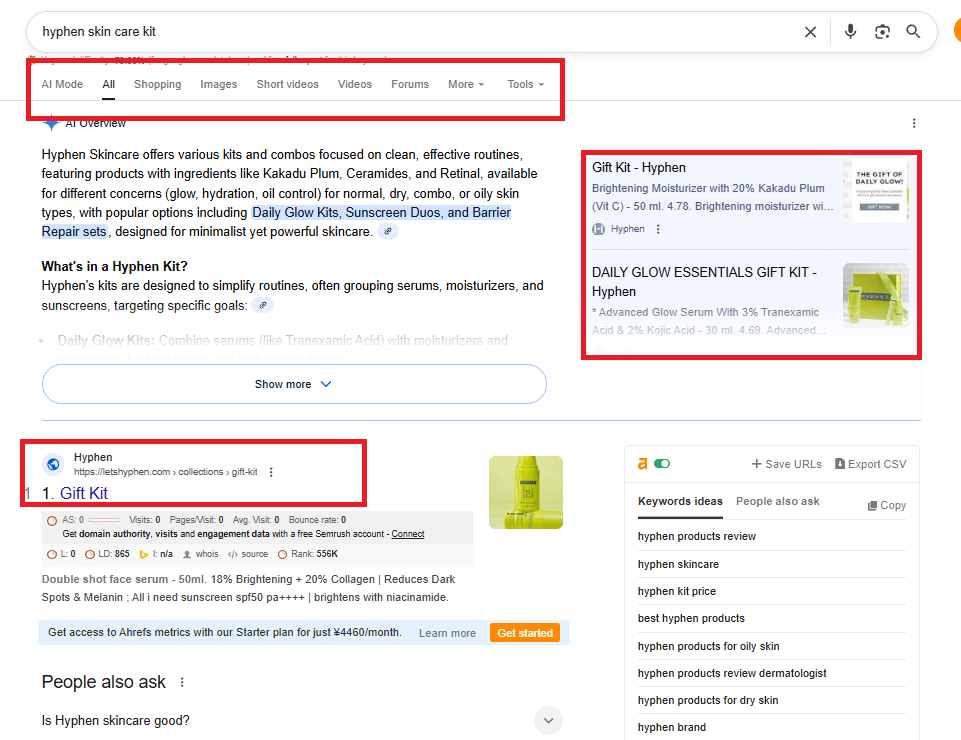
Video review for branding
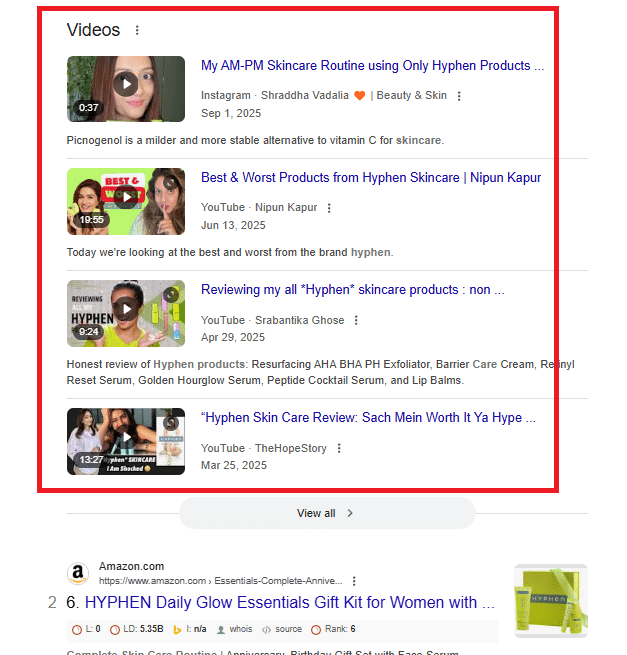
Selling this product on every affiliate platform makes it very convenient for the buyer.
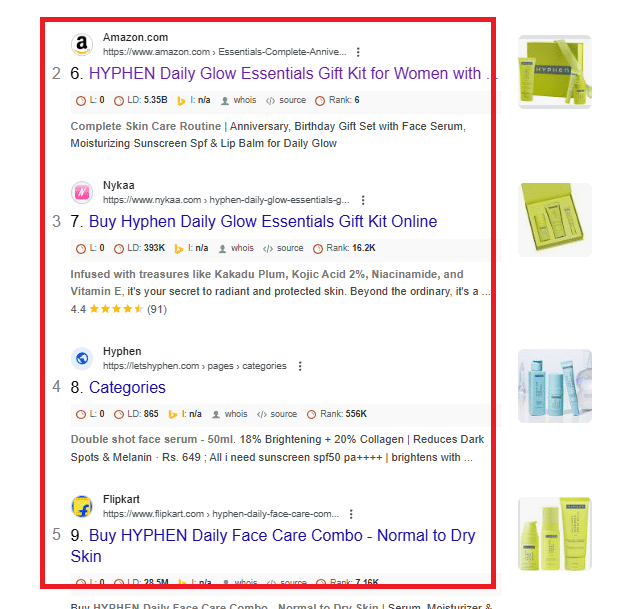
They have also had news articles related to the product and how strong they have built their branding.

This is a real buyer journey in 2025.
Here are simple stats that prove this behavior:
| User Behavior |
Percentage |
| People who watch YouTube before buying |
68%+ |
| People who search social media for ideas |
55%+ |
| People who depend on Amazon reviews and also look for real photos |
84%+ |
| People who check forums like Reddit/Quora |
35%+ |
This is exactly why Search Everywhere Optimization is important.
If buyers are everywhere, I also need to make sure the brand appears everywhere.
To Whom Search Everywhere Optimization Is Important
I recommend this approach to almost every industry, but some need it more and also some not at the start; I recommend them to stick to SEO services before using these services.
1. E-commerce brands
People compare everything: reviews, videos, social posts, and prices.
2. Local businesses
They check Google Maps, Instagram photos, Facebook comments, and ratings.
3. Service-based companies
A user checks your website, your LinkedIn, your reviews, and your social presence.
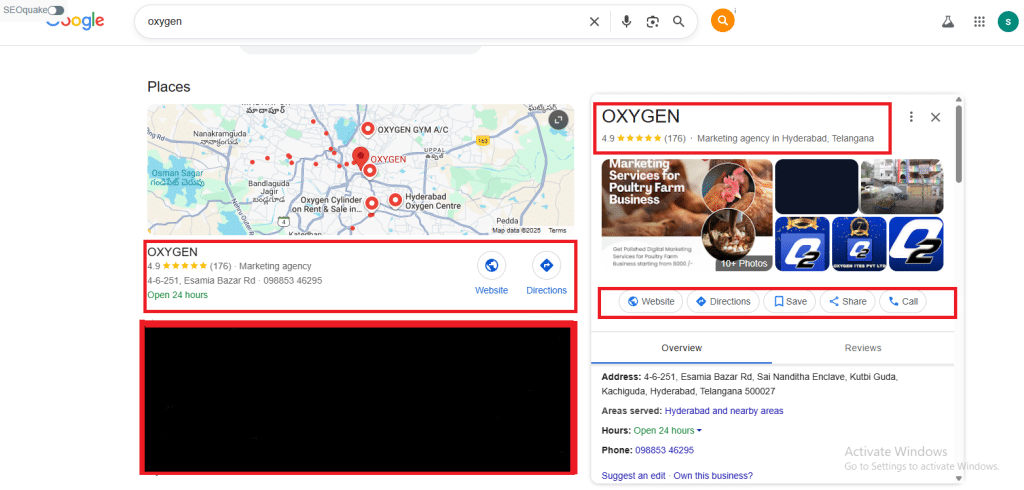
We can see in the above oxygen company how Google is providing reviews, ratings, and also how to visit the company.
4. Coaches, trainers, educators
A lot of discovery happens on YouTube Shorts, TikTok, and Instagram.
5. B2B companies
Buyers search across Google, LinkedIn, industry forums, and comparison sites.
In short, if your customers search on multiple platforms, then Search Everywhere Optimization is important for you.
Why Google SEO Alone Is Not Enough
I work in SEO, so I know how important Google is.
But the truth is very simple:
Google is only one part of the buyer’s journey now.
Let’s say someone is searching for a laptop.
They don’t just read one Google blog and buy.
They watch videos, check Reddit discussions, read Amazon reviews, and look at user feedback everywhere.
If your brand appears only on Google, you miss the entire journey where decisions are actually happening.
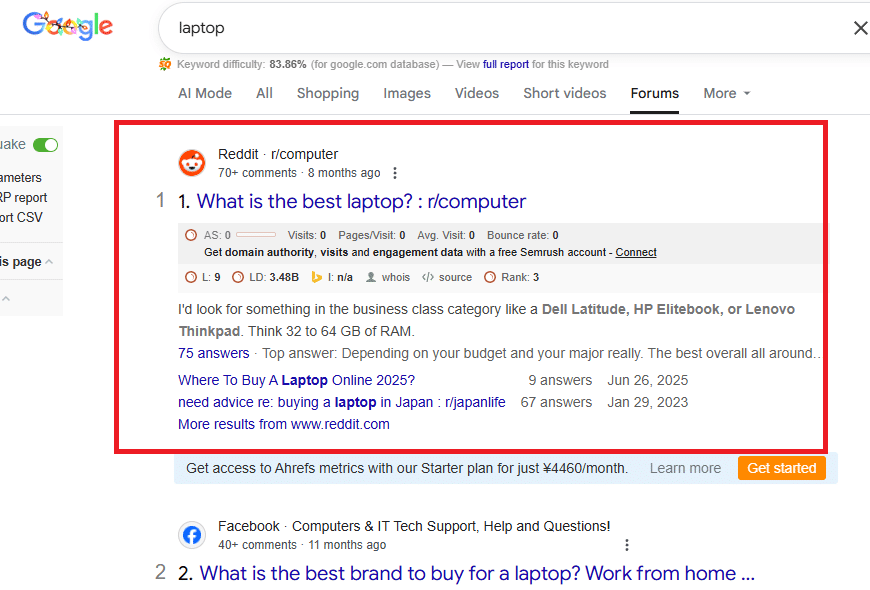
Difference Between SEO and Search Everywhere Optimization
I explain this difference to my clients using a simple table:
| Feature |
Traditional SEO |
Search Everywhere Optimization |
| Focus |
Only Google |
All platforms customers use |
| Content Type |
Blogs & web pages |
Videos, shorts, posts, reviews, forums |
| Journey |
Straight line |
Multi-step, multi-platform |
| Buyer Mindset |
“Search on Google” |
“Search everywhere before trust” |
| Visibility |
One place |
Every place that matters |
A very simple way to understand:
SEO is one channel. Search Everywhere is the full buyer journey.
Is Traditional SEO Dead?
No, traditional SEO is never going to die.
But it is no longer enough by itself.
Here’s what I usually tell people:
✔ SEO is still important
✔ Google is still the biggest search engine
✔ But people don’t stop at Google anymore
So SEO is not dead; it has simply grown into something bigger.
Conclusion
Search Everywhere Optimization is not a complicated idea. It simply matches the way people search today. Buyers move from Google to YouTube to Instagram to Reddit to Amazon and then to your website.
If you want trust, visibility, and actual conversions, you need to be present everywhere your buyer goes, not just on Google.
This is how the real buyer journey works now, and this is why I strongly believe Search Everywhere Optimization is the future of digital visibility.
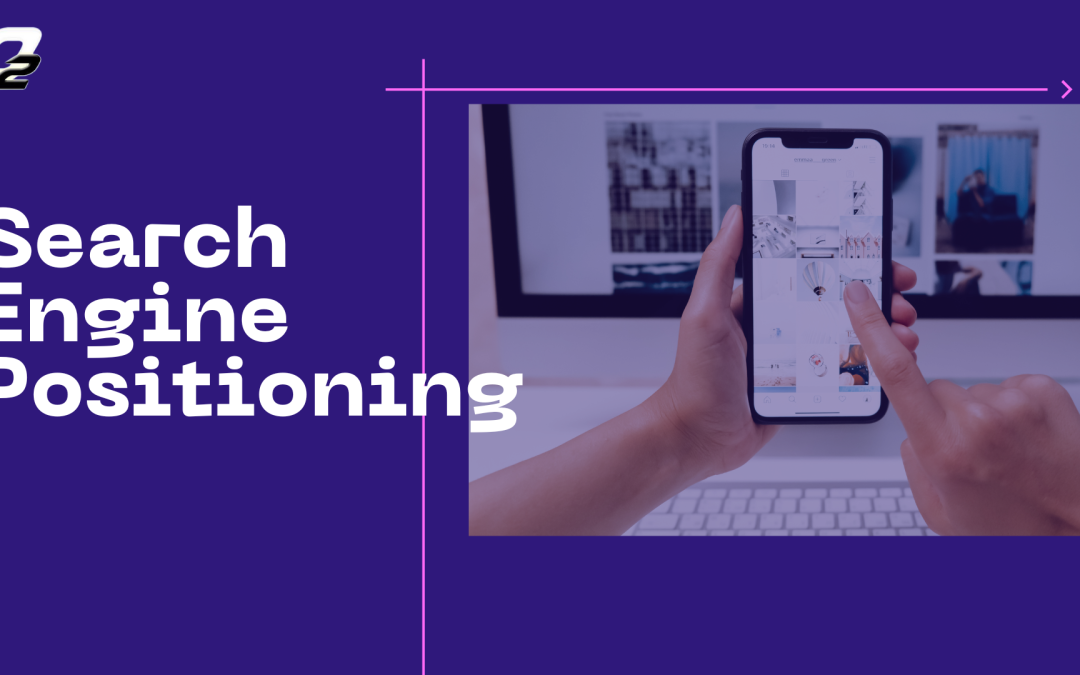
by Shashikanth Heerekar | Nov 22, 2025 | Digital Marketing, SEO News
Improve your
search engine positioning in India with proven strategies, ranking factors, common pitfalls, and expert insights. Boost visibility, authority, and long-term online growth.
Introduction
Search engine positioning plays a vital role in determining how easily your business is discovered online. In a fast-growing digital market like India, visibility can directly influence credibility, customer trust, and competitive advantage. When your website appears in strong positions for targeted searches, it attracts more traffic without paid promotions. Understanding search engine positioning helps you build smarter strategies that improve reach, engagement, and long-term online growth.
The Fundamentals of Search Engine Positioning: Key Concepts and Terminology
Search engine positioning revolves around how prominently your website appears for specific search queries. To understand it clearly, it’s important to explore the foundational concepts that guide ranking and visibility on platforms like Google, Bing, and emerging AI-driven search tools.
1. Search Intent
Search intent reflects the purpose behind a user’s query—whether they want information, directions, comparisons, or services. In India’s diverse digital environment, understanding intent is crucial because users rely heavily on search engines for quick solutions. When your content addresses the exact intent behind a query, search engines reward your page with better placement.
2. Content Relevance and Quality
Content relevance is determined by how well your page answers a user’s query. High-quality content is clear, original, and helpful. It uses simple language, accurate information, and organized formatting. Search engines recognize when your content genuinely helps users, and they prioritize such pages. In India’s competitive online sectors—like education, healthcare, and e-commerce—quality becomes a major differentiator.
3. Keyword Optimization
Keywords help search engines understand context. Effective optimization requires naturally integrating keywords into titles, headers, and the content body without stuffing. India-specific long-tail keywords, local dialect variations, and regional search patterns can also play a significant role in increasing visibility and relevance.
4. Authority and Trust Signals
Authority is built through credible backlinks, consistent updates, and trustworthy information. Indian users often search for dependable sources before making decisions, so websites with strong authority perform better. Search engines measure trust through site security, accuracy, and external validation. The stronger your credibility, the more likely your website will secure prominent positioning.
Analyzing the Current Landscape of Search Engine Positioning
The search engine positioning landscape in India is evolving rapidly due to rising internet adoption, mobile-first usage, and increasing reliance on digital solutions. India’s digital audience spans multiple languages, regions, and browsing habits, making the environment more dynamic than many global markets. As users turn to search engines for everyday needs, brands face growing competition for visibility.
Smartphones dominate India’s online activity, which makes mobile performance a crucial factor in search visibility. Google’s mobile-first indexing prioritizes websites that load quickly, adapt to different screen sizes, and provide smooth navigation. Pages that fail to meet these basic expectations lose visibility even if their content is strong.
Artificial intelligence and machine learning have significantly changed how search results are ranked. Search engines now understand conversational queries, local nuances, and contextual relationships between topics. This means that content must be more natural, more specific, and more engaging. Traditional SEO tactics alone are no longer enough to stay competitive in India’s search environment.
Additionally, competition has intensified across industries like finance, healthcare, education, real estate, and local services. Many Indian businesses are investing heavily in digital marketing, making search engine positioning more challenging. To stand out, websites must not only provide valuable content but also optimize technical performance and user experience.
The rise of voice search in India, fueled by affordable devices and multilingual support, adds another layer of complexity. Users increasingly rely on voice commands in English and regional languages. This shift demands more conversational and intent-driven content to align with how people naturally speak.
Overall, India’s search positioning landscape demands adaptability. Businesses that adjust to changing behaviors, update their content regularly, and focus on user-centered performance will see stronger, more sustainable search visibility.
Critical Factors Influencing Search Engine Rankings
1. Content Relevance and Depth
Search engines prioritize content that thoroughly answers user questions. In India, where users come from varied backgrounds and information needs, clarity and depth matter greatly. Detailed explanations, practical insights, and structured content show value and expertise. Such pages keep users engaged longer, signaling strong relevance to search engines.
2. Website Performance and User Experience
Fast performance is essential, especially in India, where internet speeds vary across regions. Websites that load quickly, work flawlessly on mobile devices, and offer smooth navigation tend to rank higher. Search engines monitor bounce rates, session duration, and interaction levels to understand user experience. A well-optimized, responsive website encourages users to stay longer and explore more content.
3. Backlinks and Domain Authority
Backlinks remain one of the strongest ranking signals. When trusted Indian or international websites link to your content, it enhances your authority. Search engines value high-quality, relevant links over sheer quantity. Strong domain authority reflects credibility, expertise, and trustworthiness. Earning backlinks through original research, helpful articles, and digital PR strengthens your overall ranking potential.
Proven Strategies for Enhancing Your Search Engine Positioning
Boosting your
search engine positioning requires a balanced mix of content strategy, technical improvements, and user-centered optimization. Begin by researching the keywords and phrases Indian users commonly search for in your industry. Use these terms naturally throughout your pages while keeping your writing helpful and readable.
Refreshing older content is another powerful strategy. Many Indian users search for updated information, especially in niches like finance, travel, and technology. Updating outdated sections, adding local examples, and incorporating new statistics help keep your content relevant. Search engines prefer websites that remain active and useful.
Technical enhancements also play a major role. Focus on improving load speed, optimizing images, compressing files, and ensuring mobile responsiveness. In India, where a significant portion of users browse on mid-range smartphones and variable network speeds, fast performance directly influences search visibility.
Strengthening your website’s authority is equally important. Earning high-quality backlinks from reputable Indian websites, blogs, or media outlets increases trust. Engaging in collaborations, guest posts, and industry discussions helps your website grow in recognition. Publishing unique insights or data makes your content more link-worthy.
Finally, regularly track your performance through analytics tools. Observing patterns in user behavior, traffic sources, bounce rates, and ranking changes helps you adjust your strategy. Search trends evolve quickly in India, so staying informed and flexible ensures long-term success. A consistent, well-rounded approach to content, performance, and authority builds a strong foundation for high search engine positioning.
Common Pitfalls to Avoid in Search Engine Positioning
1. Keyword Stuffing
Overloading your content with keywords disrupts readability and may lead to penalties. Users in India expect natural, helpful writing, and search engines now recognize when keywords feel forced. Focusing on clarity and value always produces better results.
2. Ignoring Mobile Optimization
With the majority of Indian users browsing on smartphones, poor mobile optimization can severely hurt rankings. Slow loading times, broken layouts, or complicated navigation push users away and signal poor quality to search engines.
3. Publishing Thin or Low-Value Content
Short, generic, or repetitive content rarely performs well. Users want clear explanations, practical advice, and trustworthy information. Shallow content sends negative engagement signals and limits your visibility.
4. Neglecting Technical SEO
Missing metadata, broken links, slow speeds, and unoptimized images all weaken your ranking potential. Technical
SEO services ensures your website is fully accessible and easy for search engines to evaluate.
5. Overlooking Backlink Quality
Not all backlinks help. Low-quality or spammy links can harm your reputation. Search engines prefer a few strong, relevant links over hundreds of weak ones. Focus on earning links from credible Indian and global websites.
6. Failing to Monitor Performance Metrics
Without regular analysis, it’s impossible to understand what’s working. Many websites lose positioning simply because they ignore trends, ranking changes, and shifting user behavior. Tracking performance ensures steady progress and timely adjustments.
Conclusion
Strengthening your search engine positioning in India requires a blend of relevant content, strong performance, and credible authority. When you focus on delivering genuine value and enhancing user experience, your website becomes more visible and trustworthy. Consistency, adaptability, and strategic refinement help you stand out in a competitive digital landscape and build long-term online success.
FAQs
1. What does search engine positioning mean for Indian businesses?
Search engine positioning refers to where your website appears in search results when Indian users search for specific terms. A higher position means more visibility, traffic, and trust. Since most buyers in India research online before making decisions, strong positioning helps you stand out and reach your audience more effectively.
2. How long does it take to improve my website’s ranking in India?
Improvement timelines vary depending on competition, industry, and your current website health. Generally, noticeable progress can take a few weeks to a few months. Consistent updates, quality content, technical optimization, and strong backlinks accelerate growth. Patience and ongoing effort are key to achieving stable, long-term visibility.
3. Do backlinks matter for rankings in India?
Yes, backlinks remain very important. When trusted Indian or global websites link to your content, it tells search engines that your information is credible. High-quality backlinks improve your authority and boost your chances of ranking higher. Focus on earning natural, meaningful links rather than collecting large numbers of weak ones.
4. Why is mobile optimization so critical for Indian websites?
India has one of the world’s largest mobile-user populations. Most people browse the internet on smartphones, so a website that loads slowly or performs poorly on mobile devices loses engagement quickly. Search engines prioritize mobile-friendly sites, making optimization essential for stronger rankings and better user experience.
5. How can I maintain long-term search engine visibility?
Long-term visibility comes from consistency. Regularly update your content, track performance, improve technical health, and continue building authority through quality backlinks. Stay aware of changing search trends in India and adjust your strategy accordingly. With steady effort, your rankings will grow and remain stable.
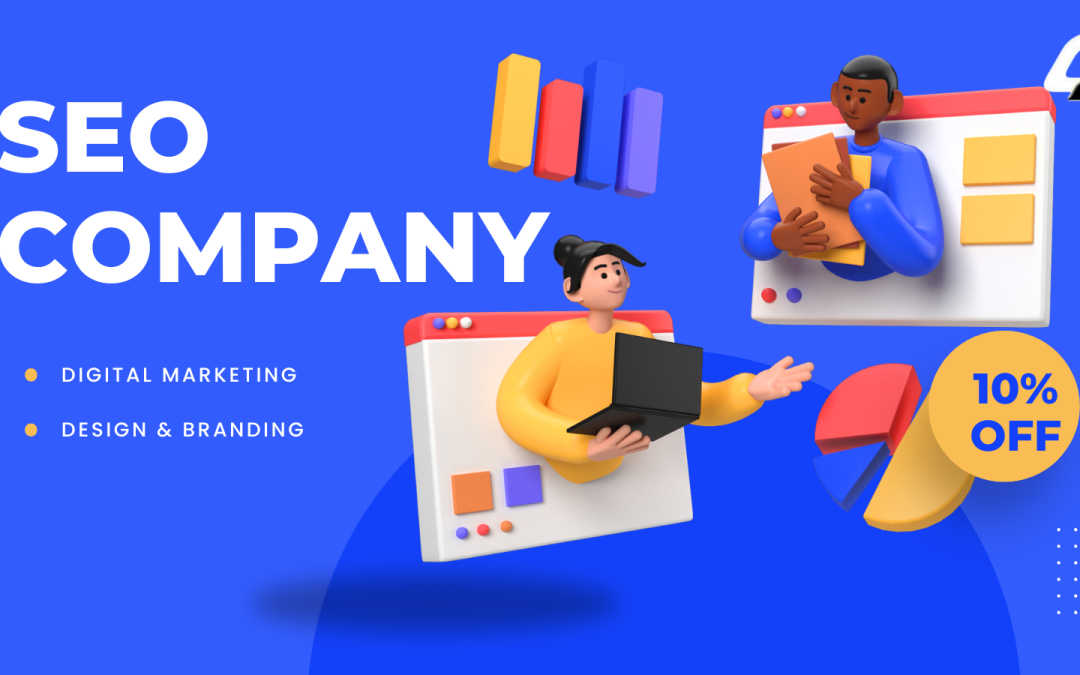
by Shashikanth Heerekar | Nov 15, 2025 | Digital Marketing, SEO News
Partner with an SEO company that provides measurable results. Increase rankings, engagement, and scale your business with ease.
Introduction
In today’s highly competitive digital landscape, it makes strategic sense for global brands to hire an Indian
SEO company. With the growth of the Indian SEO market, skilled SEO professionals based in India, and cost-effective pricing models, companies from around the world are looking to utilise SEO companies in India as a way to scale more quickly and effectively. From startups to global companies, Indian SEO companies have a reputation for achieving measurable, long-lasting digital growth.
The Current Offering of SEO Services by Indian Companies
The landscape of SEO firms in India in the past decade has changed drastically. Nowadays, with the growth of digital marketing, Indian SEO companies offer seamless, high-impact services in tactical, strategic, and technical delivery based on a variety of industries. Let us take a look at the key services offered by prominent Indian SEO firms that demonstrate why they are in the unique position of being globally competitive.
Thorough Optimization Services for Web Pages
Most Indian SEO companies put a huge focus on on-page SEO- they are the cornerstone of any SEO undertaking in India. On-page entails optimizing keywords, creating meta-tags, improving site structure, and ensuring topic relevance. With these keywords and values in place, websites communicate with search engines more efficiently, which leads to greater visibility. The best SEO company in India also uses tools like Ahrefs and SEMrush to examine competitors and improve the on-page strategy to ensure every page has been optimized for search visibility and engagement.
Strong Off-page and Link-building Technique
Off-page SEO is where Indian SEO agencies shine. They also implement genuine link-building campaigns, guest posting, influencer outreach, and social bookmarking- all aimed at building domain authority and referral traffic. Unlike the best SEO (optimization) companies in India, which often focus on the quality of links rather than pure quantity, ensuring keywords are being re-ranked is not immediate and sometimes shaky. However, some of the top SEO agencies in India have gone so far as to try to go their way into constructing organic link networks with niche-specific bloggers and content publishers to advance visibility at a global scale.
Website SEO and Technical Audit
The best SEO companies based in India typically do a technical audit, which entails digging deeper into the backend issues. The work of technical webmasters can range from simply fixing crawl errors to making sure that the site’s pages load faster, but technical SEO mainly prioritizes a better user experience. An SEO or content marketing agency in India will therefore enhance webpage speed, mobile responsiveness, and address issues with broken and dead links. They will also review security measures like implementing HTTPS. Making these types of technical improvements ensures that search engines can efficiently crawl, index, and rank pages, and essentially are laying the groundwork for the digital foundation of a Website.
Content Marketing and Keyword Mapping
Also, you’ll find that a solid, carefully crafted content strategy helps differentiate Indian-based SEO experts. SEO and Content professionals typically approach SEO and Content from a standpoint of sophisticated storytelling, evolving content that will rank and resonate with audiences. Using keyword mapping, developing strategies, and competition trend analysis, an SEO service company based in India will make the case to you regarding how every piece will lead to conversions. Whatever form of content you decide to produce, whether blog posts, product descriptions, landing pages, etc., a competent SEO service in India will produce content in line with brand goals and user intent (to generate visits!), thereby pushing the site up in the search results.
Key Benefits of Partnering with an Indian SEO Company for Global Clients
Partnering with an SEO company in India offers a distinctive mix of price, professionalism, and creativity. Indian SEO firms have become global leaders in providing stellar SEO results for clients worldwide over the years. Let’s explore the key benefits of hiring an Indian SEO firm, or an SEO company in India, for your brand’s online success.
Cost-effectiveness is arguably one of the biggest benefits. SEO services in India are much more affordable than in Western markets without sacrificing quality. This can allow startups and small businesses to compete globally. An SEO Agency in India can achieve the same or better results at a fraction of the cost of the same service in the West. This economic pricing has made India a favored destination for worldwide outsourcing of SEO services.
Another advantage is that some of the greatest Indian SEO experts or SEO consultants in India are found within its borders. The SEO professionals know SEO algorithms, analytics, and trends in online marketing and provide targeted strategies that lead to measurable results. Whether on-page, content marketing, or technical SEO, the top SEO in India graduate SEO professionals have been tested and priced in every area. Many global brands trust Indian SEO because they
Another advantage is 24/7 worldwide communication and service. SEO service companies in India’s time zones allow for around-the-clock availability and provide assurance that your campaigns never slow down. The responsiveness allows for seamless communication and quicker turnaround times. The better SEO companies in India will often assign an account manager to international clients to maintain transparency and ease.
On top of that, Indian SEO agencies mix creativity with actionable data-driven intelligence. By leveraging advanced analytics and AI-based SEO tools, the SEO companies in India customize campaigns specific to your brand’s niche. They are not just concerned with rankings— they are concerned with ROI. The top SEO companies in India employ conversion optimization, lead generation, and user experience improvements to turn clicks into loyal customers.
In conclusion, Indian SEO companies provide global standard expertise, cheap executions, and dependable communication all under one partner. Those policies have helped explain the backbone of digital success for thousands of their clients globally for a while now.
Key SEO Strategies Utilized by the Leading SEO Firms in India
The best SEO agencies in India do not simply rely on conventional practices. They use uniquely devised and data-driven approaches to produce reliable results. The SEO optimization companies in India combine creative, analytical, and technology-oriented campaigns so brands can achieve high performance on search result pages. Here is a synopsis of the highlights of each of these highly sought-after SEO companies from India.
Ethical Practices for Sustainable SEO
Trustworthy SEO firms in India apply an ethical – or white hat SEO – approach to SEO practices that align with policies and guidelines. They avoid mechanisms like link spamming and keyword stuffing. They continue to emphasize building website authority using relevant backlinking, real content, and audience engagement. For example, the best SEO services in India appreciate that long-term rankings are mostly about building consumer trust with search engines. They specialize in helping companies grow sustainably over time while adhering to Google-approved processes on a global scale.
Keyword Research and Analytics Based on Data
A significant factor of SEO success is identifying keywords that are appropriate. Indian SEO companies use advanced keyword research tools like Google Keyword Planner, SEMrush, and Ahrefs to identify opportunities. They categorize keyword phrases according to user intent (informational, navigational, or transactional). The best SEO service company in India structures and conducts campaigns with respect to user intent in the search engine results, reaching both local customers as well as a global audience. By leveraging data and reasoned planning of keywords, Indian SEO experts are confident that every post or information they assemble has the potential to attract organic traffic and generate conversions.
Integrating Local and Global SEO
Another important strategy that Indian SEO companies adopt is the strategy of integrating local SEO and global SEO strategies. Whether you are a small local business in New York or a global brand of eCommerce, SEO companies in India will effectively optimize your website both for local phrases (for example, best seo firm near me?) and global keyword demands as needed. The best SEO agencies in India will create Google My Business profiles, build citations for the client, and identify a multilingual audience. The combination of both local and global keyword strategies allows a relative dominance of search results, resulting in increased visibility and market share around the globe.
Once again, armed with innovation and precision, in the digital context, every SEO company in India is globally positioned to provide value.
Common Challenges When Working with an Indian SEO Company and Solutions
While there are plenty of benefits to partnering with an SEO agency in India, there may be challenges in collaborating, regardless of the international client’s size. Luckily, any challenges are simple to work around when you choose the right
SEO company in India that values communication and professionalism. Here are some common hurdles, and how to get things accomplished:
The first big challenge for international clients is the communication barrier. Between time zone differences and language in some situations, you may find it challenging to have a smooth project communication system. Fortunately, the best SEO companies in India have already dealt with this, developing an exceptional customer service model – 24-hour customer support! Most professional SEO companies also have assigned account managers who will reach out to you each week via email to touch base, report on your progress, and/or discuss updates on your website. These companies will also offer you digital communication tools (such as SLACK, TRELLO, or ZOOM) that will allow you to collaborate in real time, opening up the line of communication.
The second challenge may be quality. There are many can companies available in India that can provide great SEO optimization; however, they are not all created equal. Not all SEO companies will use white hat techniques to manage your company’s website activity, but reassuringly, there are SEO companies that will engage in black-hat methodologies.
There is also the matter of cultural and market knowledge. International clients may be concerned that an SEO company from India may not understand the buyer persona of their specific market. The best SEO agency in India readily solves this by performing extensive audience research and analytics to create content that is relevant to all target markets as a global company. Indian SEO experts perform in-depth competitor analysis and user intent modeling, as well as demographic study to develop their campaigns.
Additionally, some clients may be concerned about data transparency in reporting and analytics. Less-reputable SEO service companies in India, particularly smaller or newer companies, may just provide a low-level overview of the performance of campaigns. To solve for this, trustworthy SEO companies in India provide clients with real-time SEO dashboards and monthly performance reports documenting their keyword rankings, organic traffic, and return on investment metrics.
Finally, the timeframe expectation is often where misunderstandings arise. SEO is a long-term and sustainable work stream, but clients may expect some form of gratification in an unreasonable timeframe. The best SEO agencies in India work to educate their clients about realistic timeframes for growth. They ultimately understand that their main goal is to generate the best possible results in a shifting marketplace, so they prioritize sustainable, longer-term ranking growth instead of shoot-from-the-hip quick wins for clients.
In short, while there may be a few challenges working with an SEO company located in India, reputable companies will turn those challenges into opportunities. When you have an open line of communication while also employing transparent planning of your SEO growth strategy, in a landscape that changes frequently, trust becomes paramount. Consistent check-ins with a reputable SEO in India ensure a strong foundation for long-term online success.
Case Study: Attaining Online Growth with an Indian SEO Company
Real-world success stories demonstrate the exact way in which an Indian SEO company can fundamentally shift the online trajectory of your brand. This case study will talk about how an SEO company in India set the groundwork and ultimately earned significant outcomes for a global eCommerce client through implementing sound SEO.
The Client Information and Business Disposition
The client was a mid-sized eCommerce brand in the United States suffering from a lack of organic traffic and visibility. After extensively researching several of the top SEO agencies in being in India, the client decided to partner with an SEO company in India that was known for their affordability and effectiveness.
The SEO Challenge Faced by the Client’s Business
It was before the client reached out to SEO experts in India that the client’s website had poor keyword targeting, low-value backlinks, slow load, and visibility in search engines. The client attempted ads and could not achieve organic growth. The client was seeking a flexible SEO company with the additional expertise to develop a long-term term sustainable SEO plan.
Customized SEO Strategy from the Indian SEO Company
The SEO agency located in India started with a website audit to identify any technical issues, keyword gaps, and possibilities. Their strategy included on-page optimization, building backlinks with high authority, and improving the performance of user engagement. They also constructed a robust content marketing strategy to guarantee that every blog and product page targeted the right, relevant, high-intent keywords.
Execution
Over the ensuing six months, the Indian SEO agency executed a number of different strategies, including website restructuring, schema markup, and writing content based on keywords. Meanwhile, their off-page team developed relationships with niche publishers to build natural backlinks. The Indian SEO agency ensured that all the work continued to be compliant with algorithm updates from Google, keeping the technical, white-hat optimization.
Overall Performance Metrics
Within six months, the client’s organic traffic grew by more than 160%, and top keywords ranked in the top 10 positions on Google. Their sales grew by 90%, and their website domain authority increased from 24 to 45. The client indicated significant ROI, confirming that SEO services from India have led to real, sustainable results.
Final Thoughts
This case demonstrates that the right SEO service agency in India will totally change a company’s online performance. The mix of technical, content
Conclusion
Partnering with an Indian SEO company means more than just outsourcing—it’s about forming a strategic alliance that transforms your digital footprint. The right SEO firm in India can help your business achieve higher rankings, better visibility, and stronger ROI. Choose wisely, and your online growth will speak for itself.
FAQs
1. Why should I hire an Indian SEO company for my business?
When you choose an SEO firm from India, you benefit from global expertise at a fraction of what you would pay elsewhere. The best SEO firms in India rely on data-driven approaches, creativity, and industry experience to improve search rankings. On your part, the scalability, 24/7 support, and proven results make these firms the perfect partner for any business looking for sustainable results on a global scale.
2. How do Indian SEO experts guarantee long-term SEO success?
In India, SEO experts rely on white-hat SEO techniques, keyword research, link-building, and precise analytics to guarantee long-term success. The best SEO agencies in India continuously adjust to algorithm updates, focusing on bringing authority and trust to the various websites they work with. Their goal is not to get a few quick hits, but rather consistent long-term visibility for your brand.
3. Are SEO services in India cheap yet effective?
Yes! SEO services in India are viewed as affordable and performance-based. The top SEO service company in India provides the same quality and, in many respects, they are equal to that from the Western agencies; however, you are paying a fraction of the cost. All while getting the biggest bang for your buck with no professionalism or results compromised.
4. How do I find the best SEO company in India for my business?
If you want to know how to find the best SEO company in India, consider looking at client reviews, going through the portfolio, and looking for transparency. Some of the top SEO companies in India, like SEO Yodha etc., have demonstrated their track record of achieving global results through ethical SEO and their metrics of growth that are measurable.
5. Can an Indian SEO company manage International SEO?
Yes totally! Some of the top SEO companies in India also manage local and global SEO. They put together strategies to target an international audience, optimize in multiple languages, and gain rankings globally. It doesn’t matter if your audience is moved to the USA, UK, or Asia, you will be covered with an Indian SEO company.
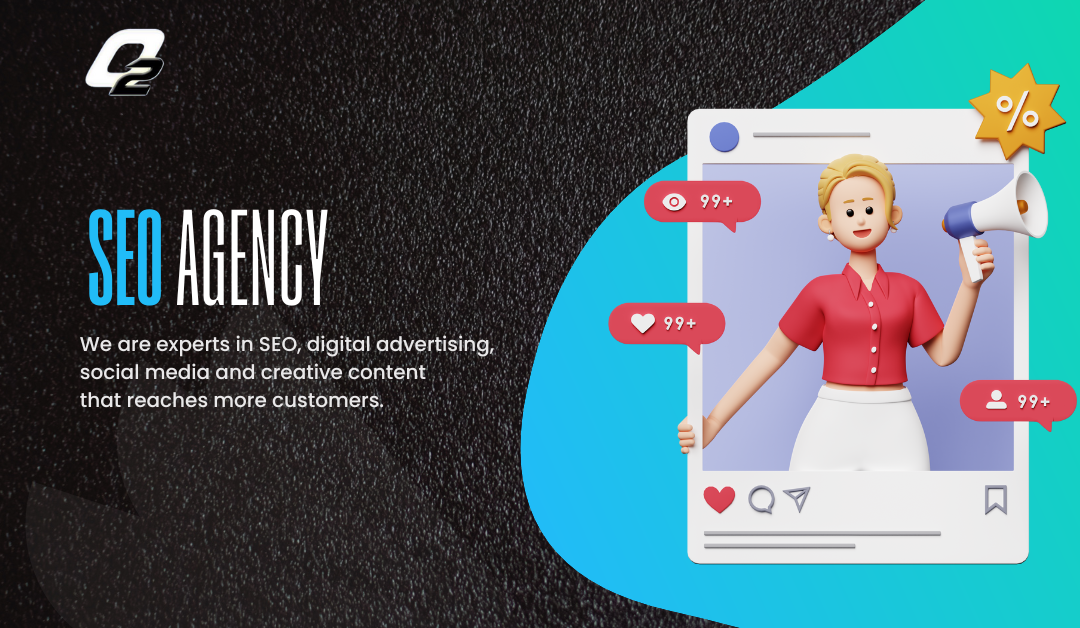
by Shashikanth Heerekar | Nov 8, 2025 | Uncategorized
Partner with a top SEO Agency to increase traffic, rank higher, and grow your online visibility. Smart strategies for real business results!
Introduction
In today’s fast-paced digital world, businesses rely on SEO agencies to strengthen their online visibility, attract qualified leads, and dominate search engine results. An SEO agency optimizes websites, manages keyword strategies, builds quality backlinks, and enhances user experience — ensuring that brands rank higher and stay competitive in the ever-evolving online landscape.
The Importance of SEO for Business Growth and Online Visibility
Search Engine Optimization (SEO) is the lifeline of modern digital marketing. It helps businesses — from startups to SaaS companies — gain visibility, attract targeted audiences, and convert leads into loyal customers. Let’s explore how SEO contributes to long-term success in four key areas.
Boosting Organic Traffic and Brand Awareness
Organic traffic is the most valuable type of website traffic. Unlike paid ads, SEO focuses on attracting visitors naturally through relevant search results. When a site ranks on the first page of Google, it earns credibility and brand exposure. For SaaS companies, ranking for niche terms like “best SaaS SEO agency” or “SEO for SaaS companies” can mean consistent, high-quality traffic from businesses actively searching for solutions. Over time, this visibility establishes authority in the market and reduces reliance on paid campaigns, leading to sustainable growth.
Improving User Experience and Website Performance
SEO isn’t just about keywords — it’s also about providing an exceptional user experience. Professional SEO agencies optimize website speed, mobile responsiveness, and navigation structure to ensure visitors find what they need quickly. A smooth, engaging site keeps users browsing longer, which signals to search engines that your website is valuable. For SaaS brands, this means lower bounce rates, more demo sign-ups, and better retention rates.
Enhancing Credibility and Building Customer Trust
Ranking high on Google isn’t just about visibility — it’s about trust. Users instinctively believe that top-ranking websites are credible and reliable. SEO agencies employ ethical link-building and content optimization to build that credibility over time. When potential clients search for “SaaS SEO consultants” or “SEO agency for SaaS companies,” a top-ranked brand immediately stands out as a trusted authority in the field.
Driving Long-Term ROI and Sustainable Growth
Unlike paid ads that stop delivering results once you stop spending, SEO compounds over time. By investing in professional SEO services, businesses build a foundation that continually drives organic traffic and leads. The return on investment (ROI) becomes more substantial as the website gains authority and rankings stabilize. Whether it’s a B2B SaaS SEO agency or an eCommerce business, effective SEO strategies ensure steady, scalable growth.
Key Services Offered by Professional SEO Agencies
A top-tier SEO agency provides a comprehensive suite of services designed to optimize your online presence and drive measurable results. These services go far beyond keyword research and include technical, on-page, and off-page optimization strategies.
Professional agencies begin with a thorough SEO audit to assess website health, identify issues, and craft a strategy aligned with your goals. They focus on keyword research to target high-intent search terms like “SaaS
SEO services” or “SEO company for SaaS.” This ensures that your content reaches the right audience.
Next comes on-page optimization, which includes improving meta tags, headers, internal linking, and content quality. Agencies ensure your pages are both search-engine-friendly and user-friendly. Off-page SEO involves building authoritative backlinks through guest posting, digital PR, and outreach — strengthening domain authority and ranking potential.
Technical SEO focuses on site speed, crawlability, and mobile responsiveness. Many SaaS SEO agencies also emphasize content marketing, creating valuable blogs, guides, and landing pages to attract leads organically. Furthermore, local SEO strategies help businesses dominate regional markets, while analytics and reporting provide transparency and measurable success.
Ultimately,
professional SEO agencies combine creativity with analytics to deliver sustainable growth. By leveraging proven SEO frameworks, they help brands climb search rankings, increase visibility, and establish a powerful online reputation that drives continuous engagement and conversions.
How to Choose the Right SEO Agency for Your Needs
Selecting the right
SEO agency can make or break your online strategy. With countless options available, finding one that aligns with your goals, values, and budget requires thoughtful consideration.
Assessing Experience and Industry Expertise
Start by examining an agency’s track record. Have they worked with businesses similar to yours? For SaaS companies, a specialized SaaS SEO agency with proven experience in software marketing will understand your buyer journey and competitive landscape. Look for agencies that have case studies or portfolios showcasing real results — ranking improvements, traffic growth, or conversion boosts.
Evaluating Transparency and Communication Style
A trustworthy SEO company values transparency. They should explain their processes clearly, provide regular reports, and communicate progress honestly. Avoid agencies that promise overnight success or use vague jargon. Instead, choose one that involves you in strategy discussions, explains performance metrics, and ensures collaboration at every stage.
Analyzing Case Studies and Client Testimonials
Client reviews reveal a lot about an agency’s reliability and quality of service. Explore testimonials and case studies to see how they’ve helped other businesses achieve SEO success. Positive reviews, measurable outcomes, and client satisfaction are key indicators of a dependable SEO partner. The best SaaS SEO agencies proudly display their client results because they know performance speaks louder than promises.
Measuring Success: Key Metrics to Track with Your SEO Agency
Success in SEO isn’t just about ranking higher — it’s about achieving measurable business outcomes. Tracking the right metrics helps you and your SEO agency understand what’s working and where adjustments are needed.
Key performance indicators (KPIs) include organic traffic, which measures how many visitors come from search engines. Next, keyword rankings track your position for target phrases like “SEO for SaaS” or “best SaaS SEO agencies.” Click-through rate (CTR) shows how compelling your listings are, while bounce rate indicates how engaging your content is.
Conversion rate is perhaps the most crucial metric — it measures how many visitors perform desired actions, such as signing up for a demo or making a purchase. Domain authority and backlink quality also reflect your site’s trustworthiness and influence online.
A good SEO agency provides detailed reports on these metrics, interpreting data to refine strategies and achieve continuous improvement. Remember, SEO is a long-term investment — consistent tracking ensures your efforts are aligned with business goals and delivering sustainable growth.
Common Misconceptions About SEO Agencies
SEO Provides Instant Results
SEO is not an overnight process. It can take months of consistent effort before results appear. Quality SEO agencies focus on long-term growth, not quick wins.
Keyword Stuffing Equals Better Rankings
Overusing keywords harms your content’s readability and ranking. The best SEO agencies emphasize balance, focusing on natural, user-centered optimization.
Link Quantity Is More Important Than Quality
It’s not about how many links you have, but where they come from. A few high-quality backlinks from trusted sites outweigh dozens of low-quality ones.
SEO Is a One-Time Effort
SEO requires continuous updates and monitoring. Search algorithms evolve frequently, and staying relevant means adapting strategies regularly.
Paid Ads Are Better Than SEO
Paid ads deliver short-term visibility, while SEO builds long-term authority. The best strategy often combines both for maximum impact.
Any SEO Agency Can Deliver the Same Results
Experience matters. Not all SEO agencies specialize in your industry. For SaaS, choosing a dedicated SaaS SEO company ensures tailored, effective strategies.
Conclusion
Partnering with the right SEO agency empowers your business to achieve visibility, credibility, and sustainable growth. By aligning strategies with measurable goals and trusting experts who understand your industry, you can turn your website into a long-term growth engine that consistently delivers results.
FAQs
1. How long does it take to see results from an SEO agency?
SEO is a gradual process. Typically, noticeable improvements in traffic and rankings appear within 3–6 months, depending on competition and website condition. The key is consistency — long-term investment in SEO delivers compounding, lasting results for your business or SaaS company.
2. Why should a SaaS company hire a specialized SEO agency?
SaaS SEO agencies understand the unique challenges of software marketing, such as targeting decision-makers, handling long sales cycles, and optimizing for recurring revenue. Their expertise ensures tailored strategies that drive qualified leads and increase conversions from organic search.
3. How do SEO agencies measure success for SaaS clients?
They track performance using metrics like organic traffic, keyword rankings, demo sign-ups, lead quality, and conversion rates. Transparent reporting and regular reviews help align SEO efforts with your SaaS business goals and continuously improve results.
4. Can I manage SEO on my own without an agency?
While basic SEO can be handled internally, achieving significant, scalable results requires technical expertise, consistent monitoring, and strategic execution — which professional SEO agencies provide. Their tools, experience, and insights save you time and ensure maximum ROI.
5. What makes the best SEO agency stand out?
The best SEO agencies combine transparency, data-driven strategies, and proven results. They don’t rely on shortcuts but focus on long-term growth, clear communication, and customized plans — especially for niche sectors like SaaS, where expertise truly matters.

by Shashikanth Heerekar | Oct 31, 2025 | Money Calculator
If you’re a Snapchat user, you can get started with the Snapchat Money Calculator. This calculator can help you figure out how much money you can earn and benefits from your snaps.
What is the Snapchat money calculator?
Snapchat is an image-messaging and multimedia mobile application. It was founded by Reggie Brown, Bobby Murphy, and Evan Spiegel while they were students at Stanford University.
The app allows users to upload images and videos, which will disappear after a while. Snapchat’s users can overlay text or drawings on their pictures.
Snapchat accounts can access the Snapchat money calculator. It’s a simple tool that lets users see how much money their account can make.
The calculator considers the Snapchat score, the number of friends, and the number of snaps sent and received.
The Snapchat calculator will display the maximum amount users can make with their account.
Snapchat’s Money Calculator is a tool that allows you to calculate how much money you can earn from your Snapchat account.
Some factors factor into it, the number of snaps you send per day, and the amount of snapping you receive each day.
The Snapchat Money earning Calculator is a valuable tool for anyone looking to make money from their Snapchat account.
It calculates the average number of snaps you send per day, and the average number of snaps you receive per day.
Discover how much you can earn on Facebook. Use our money calculator to plan your content strategy effectively.
How does the Snapchat money calculator work?
Calculating how much money you can make from your Snapchat account is now possible with the Snapchat Calculator.
To use the Snapchat Money worth Calculator, enter your Snapchat username, some snaps sent and received, and the number of views on your stories.
The Snapchat Calculator will then estimate how much you could make from your Snapchat account.
Discover your Twitter earning potential. Use our calculator to plan and maximize your social media income.
What are the benefits of using the Snapchat money calculator?
A Snapchat’s money calculator can be used to estimate how much money you can earn by taking snaps. The Snapchat money tool is very easy to use.
Snapchat benefit money calculator can help users determine the maximum amount they can make with their Snapchat account.
The calculator factors in various factors, including followers, views per day, and Snaps sent.
Snapchat calculator is available to anyone, regardless of whether they want to earn or are already making money.
The calculator provides a quick and easy way for users to calculate how much money they can make from Snapchat accounts.
Snapchat’s money calculator has many benefits. You can estimate your earnings, see how much money can come from different activities, and see the potential earning potential of a Snapchat account.
Using the Snapchat money calculator is a great way for users to estimate their earnings potential from their Snapchat accounts.
Calculate your YouTube earnings with our YouTube money calculator. Discover how to monetize your videos for maximum profit.
How to get started with the Snapchat money calculator?
Here are some steps to get started with Snapchat’s money calculator.
Download the app, and then create an Account. Once you have created an account, you will need a link to your bank account. This will allow the app to track your spending and calculate how much money remains each day.
Once you complete this, the app will allow you to track your expenses. The app will show you how much money was spent on each item and provide a total for the day.
The app also allows you to create a budget. This will help you stay on top of your spending habits and ensure you only spend what you can afford.
Snap money calculator can be used to keep track of and monitor your spending. This is the app to use if you want to budget your money.
Some tips for using the Snapchat money calculator
Here are some tips to help you use Snapchat’s money calculator. These are some useful tips for using Snapchat’s money calculator.
- The calculator only gives an estimate. It does not predict how much you will make.
- The calculator doesn’t account for the time spent on Snapchat. It only considers the number of snaps you send.
- As an estimate, you can use the calculator. It does not give you an exact estimate of how much money you will make.
- Snapchat’s time is not taken into consideration by the calculator. It only considers the number and quality of your snaps.
- The calculator will show you how much you can make. However, it is not a guarantee that you’ll make that much.
- You can adjust the settings to ensure you are happy with the amount of money the calculator gives you. You can, for instance, change how many snaps you send per day.
Snapchat’s money mistakes to avoid
Snapchat allows users to share photos and videos easily. Snapchat also allows you to send and receive payment from friends.
You should know the money mistakes you make when using this app.
Sending money to people they need to learn is one of the biggest errors users can make. This could result in the user losing the money if the recipient has not been a trusted friend/family member.
Sending payments without verifying the identity and recipient is another error. This can lead to payments being sent the wrong way.
End users are advised not to send money to anyone they don’t know. This can result in scammers trying to take your money.
Users can avoid these mistakes and ensure they don’t lose money while using Snapchat.
Conclusion
Snapchat Money Calculator is an online tool that lets users calculate how much they could make by snapping.
The tool is very easy to use. Users need to enter their Snapchat username, the number of snaps taken, and the money they want to make.
Once this information has been entered, the tool will calculate the amount of money the user can earn by taking snaps. It is free and available to everyone.
FAQ’s on Snapchat money calculator
What is the average Snapchat price per 1k?
Snapchat offers a view-based payment. Snapchat is not paying users for the number of views. Snap users don’t earn any money for posting regularly to Snapchat.
To earn more, submit your best Snaps and Spotlight submissions. Each day, you will be paid $1,000,000.
Does Snapchat pay money?
The company calculates its payments on a curve. This includes various engagement metrics, unique video views and favorites, and daily users who view Snap.
Snap paid 12,000 creators more than $250 million in 2021 as part of its Snapchat Spotlight Program, the company stated.
How many snaps does one Snap make?
You will receive a point if you send a Snap. But there are no points if you only use Snapchat to message. Also, you get the point for adding Snaps to your Story. Snapchat’s scores are not affected by watching stories.
If your business works with customers beyond Hyderabad, we can here to your get other to help you with our SEO services in Hyderabad. contact us for SEO help in Hyderabad, we come up with a customized plan for SEO optimization in Hyderabad for your business











